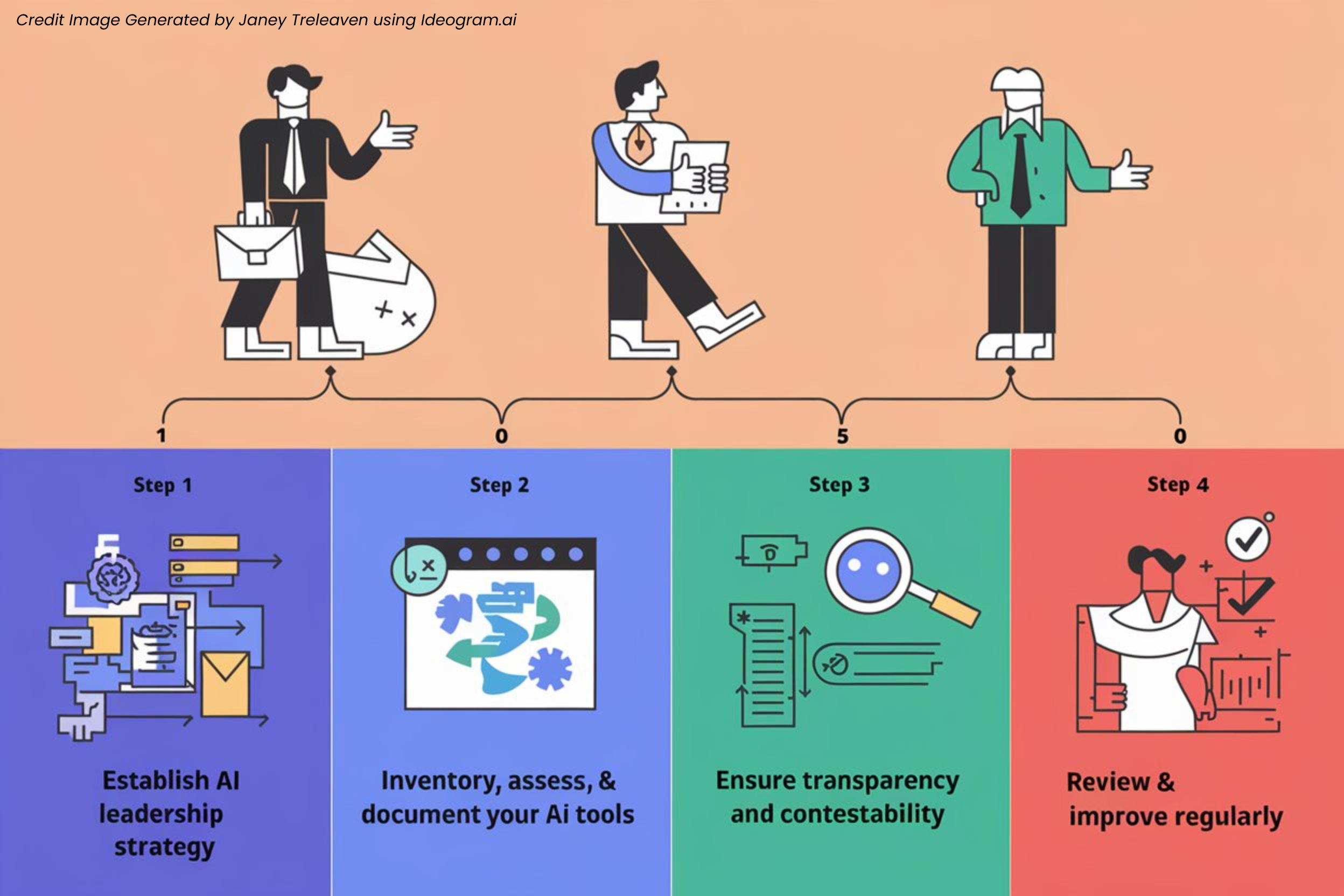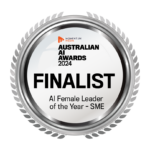
TL;DR
The AI sector is witnessing rapid advancements and intense competition. Major players, like the new Chinese models Yi and Qwenl, are vying for supremacy in LMSYS Chatbot Arena, an impartial AI performance evaluator through “AI battles”. GPT-4o leads while start-ups and tech giants pump billions into AI research and development to maintain an edge.
While the technology offers a brighter future with initiatives like ChatGPT Edu, enhancing educational processes, and AI-driven drones revolutionizing search and rescue, it also presents darker challenges. The misuse of AI in cybercrime and global propaganda campaigns necessitates urgent ethical oversight and regulatory frameworks to prevent its exploitation.
For small businesses and society at large, the dual nature of AI’s evolution calls for a balance—to leverage the technology’s transformative potential while guarding against its risks—ensuring progress that’s both powerful and principled.
Continue reading to find out more about the latest in AI and our insights for Australian Small Businesses.
The Latest in the War for the Best AI Model
In a world where it’s increasingly difficult to discern truth from fiction, paid promotion from objective analysis, how can we determine which AI model truly reigns supreme? Fortunately, there are independent sources we can turn to, like the Chatbot Arena created by LMSYS.
When we last checked in late April, Meta had just launched their Llama 3 model. But the AI landscape is rapidly evolving, with three new players now rising to the top of the arena leaderboard – Yi from 01.ai and Qwenl from Alibaba, both Chinese models, as well as Reka from California-based AI21 Labs.
As expected, GPT-4o from OpenAI currently holds the top spot. But we should keep a close eye on the progress from China. With their immense resources and focus on AI as a strategic priority, Chinese models like Yi and Qwenl could soon give OpenAI a run for their money.
Notably absent from the top ranks are models like Grok from Elon Musk’s X.ai and Claude from Anthropic. Grok has not just dropped in the rankings; it has completely disappeared from the LMSYS Chatbot Arena entirely. There are rumours that it has been removed due to its API integration issues or some are saying that X’s take on no censorship has also pressurised organisations to remove it from their platform. In my opinion, censorship laws vary from region to region and they are subjective. Users should have the right to use them how they see fit instead of being told by other organisations. Nevertheless, nothing can be said with confirmation since an official statement from LMSYS is still awaited.
While leaderboards provide a high-level view, the best part of the Chatbot Arena is the ability to witness “AI battles” between models. You submit a prompt, two models provide responses, and you judge which is superior – only then revealing which models competed. These human evaluations directly influence the leaderboard rankings, making it one of the most trustworthy sources for model performance available.
Since you can’t simply ask an AI model which one is best – you need to rely on impartial human judgment. Platforms like the Chatbot Arena provide that objectivity. Try it for yourself here – Chat with Open Large Language Models (lmsys.org)
Another model making waves is Microsoft and MIT’s Phi 3, which has won some of our AI battles despite not yet cracking the top of the leaderboards. Perhaps what businesses really need are small language models (SLMs) that are purpose-built for specific tasks rather than large, general models that try to do everything.
For small businesses, the broader this competition becomes, the more affordable AI services will get. Our recommendation remains the same – stay flexible with your choice of large language model provider. The landscape is shifting rapidly, and an upstart model could soon take the crown.

Key Advancements from OpenAI, Nvidia, Apple & Perplexity
OpenAI’s latest language model, GPT-4o, has encountered significant issues with its Chinese-language outputs due to polluted training data. Researchers found that a large portion of the Chinese tokens used to train the model were derived from spam websites, resulting in responses filled with pornographic and gambling content. This problem highlights the broader challenge of sourcing high-quality Chinese-language data.
Nvidia has introduced NIM (Nvidia Inference Microservices), a platform designed to simplify and accelerate the deployment of generative AI applications. NIM allows developers to deploy AI models in minutes using optimized containers that can run on various infrastructures, including clouds, data centres, and workstations.
Perplexity’s new “Pages” feature allows users to generate structured articles or reports by providing a prompt, with real-time web scanning and proper citations. This is ideal for content creators, educators, and researchers. Similarly, OpenAI is offering free GPT 4o to its users.
This last update is particularly beneficial for small businesses as it allows for more hands-free management of tasks. With the enhanced Siri capabilities, business owners can navigate apps, send messages, and make phone calls using just voice commands, streamlining daily operations. Additionally, the ability to customise Siri’s voice, language, and response settings can help tailor the assistant to better meet the specific needs of their business, improving overall productivity and user experience.
Big Money
The AI industry is witnessing a  significant influx of investments and strategic moves aimed at maintaining and enhancing competitive edges. Elon Musk’s generative AI Startup, xAI, is set to close a $6 billion funding round, valuing the company at over $24 billion. This substantial investment is poised to challenge industry leaders like OpenAI and Google DeepMind by leveraging high-quality data from X, formerly Twitter. Such a bold move underscores the intense competition and the high stakes involved in the AI race. Musk has said that xAI’s goal is to be “as truth-seeking as possible” and had criticized other models such as ChatGPT and Google’s Gemini, of “pandering” to political correctness. He also said he wants Grok “to be the funniest AI chatbot.”
significant influx of investments and strategic moves aimed at maintaining and enhancing competitive edges. Elon Musk’s generative AI Startup, xAI, is set to close a $6 billion funding round, valuing the company at over $24 billion. This substantial investment is poised to challenge industry leaders like OpenAI and Google DeepMind by leveraging high-quality data from X, formerly Twitter. Such a bold move underscores the intense competition and the high stakes involved in the AI race. Musk has said that xAI’s goal is to be “as truth-seeking as possible” and had criticized other models such as ChatGPT and Google’s Gemini, of “pandering” to political correctness. He also said he wants Grok “to be the funniest AI chatbot.”
Nvidia, another key player in the AI market, is also making significant strides. CEO Jensen Huang announced plans to upgrade the company’s AI accelerators annually, with the introduction of the Blackwell Ultra chip in 2025 and the Rubin platform in 2026. This aggressive upgrade cycle is designed to maintain Nvidia’s leadership in the AI hardware market, ensuring that it continues to provide cutting-edge technology to support AI advancements.
Meanwhile, OpenAI is rebooting its robotics team, which it had disbanded in 2020. This revival is driven by recent rapid advancements in robotics facilitated by generative AI, highlighting OpenAI’s commitment to exploring and expanding the applications of AI in various fields.
As far as small businesses are concerned, Elon Musk’s xAI and Microsoft’s substantial investments can democratize sophisticated AI capabilities, enabling them to enhance customer engagement and streamline operations. Nvidia’s annual upgrades to AI accelerators and OpenAI’s renewed focus on robotics can offer small businesses cutting-edge hardware and automation solutions, boosting productivity and competitiveness.
AI For Bad
While the advancements in AI are driving significant progress and investment, there is a darker side to this technology that cannot be ignored. Artificial intelligence has not only boosted productivity in legitimate sectors but has also provided new tools for the criminal underworld. Generative AI has made it easier for criminals to engage in activities such as phishing, scamming, and doxing. These AI-driven methods are more sophisticated and harder to detect, posing a significant threat to individuals and organizations alike.
Moreover, OpenAI has uncovered that groups from Russia, China, Iran, and Israel have been using its technology for propaganda campaigns. These groups were caught attempting to influence political discourse globally, highlighting the potential for AI to be weaponized in the realm of information warfare. The fact that these groups were detected and removed is reassuring, but it is likely just the tip of the iceberg. With a record-breaking number of elections taking place this year, the potential for AI to be used in manipulating public opinion and undermining democratic processes is a growing concern.
These examples underscore the dual-edged nature of AI technology. While it holds immense potential for positive impact, it also opens up new avenues for malicious activities. The challenge for the AI community and regulators is to harness the benefits of AI while mitigating its risks. This requires robust ethical guidelines, vigilant monitoring, and international cooperation to prevent the misuse of AI and protect the integrity of societal systems.
AI For Good
OpenAI has launched ChatGPT Edu, a specialized version of ChatGPT designed for universities and educational institutions. Built on the GPT-4o model, ChatGPT Edu offers features such as data analysis, document summarization, grant writing, and paper grading, all at an affordable rate. Additionally, OpenAI has introduced discounted rates for non-profits, allowing them to access ChatGPT Team for $20 per user per month and offering a 50% discount for larger non-profits ready for large-scale deployment.
Sony Pictures Entertainment is leveraging AI  to produce movies and shows more efficiently, focusing on areas such as animation and post-production. Tony Vinciquerra, CEO of Sony Pictures, highlighted the potential of AI to streamline production processes, reduce costs, and enhance creative workflows.
to produce movies and shows more efficiently, focusing on areas such as animation and post-production. Tony Vinciquerra, CEO of Sony Pictures, highlighted the potential of AI to streamline production processes, reduce costs, and enhance creative workflows.
AI-directed drones could revolutionize search and rescue operations by optimizing search paths to find lost hikers faster. Unlike traditional methods, which rely heavily on manual planning, AI can analyse terrain, weather conditions, and other variables to create efficient search patterns. This technological advancement promises to significantly improve the speed and success rate of rescue missions, potentially saving more lives.
Wrapping Up AI Ethics
In conclusion, the AI landscape is rapidly evolving with significant investments and technological advancements driving both opportunities and challenges. Major players like Elon Musk’s xAI, Microsoft, and Nvidia are making substantial investments to enhance AI capabilities, democratize access, and maintain competitive edges. These moves promise enhanced tools and platforms for businesses, particularly small enterprises, to streamline operations and boost productivity.
However, the darker side of AI misuse, such as its exploitation for criminal activities and propaganda, underscores the urgent need for vigilant regulation and ethical guidelines. Platforms like the Chatbot Arena, which rely on impartial human judgment, offer a trustworthy means to evaluate AI models.
Staying flexible, informed, and adaptable will be crucial for leveraging AI’s potential while mitigating its risks, ensuring that the benefits of AI are maximized while its threats are minimised.







